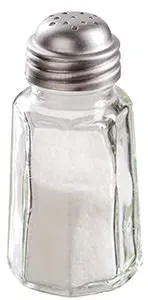 Albite is a sodium calcium aluminosilicate. It is one of six minerals belonging to the plagioclase feldspar family of minerals. Each species belonging to this group has a different chemical composition. Where the composition of each species differs, is in its albite and anorthite content. Albite, as can be guessed by its name, has the largest amount of albite content. It is also the sodium end member of the family.
Albite is a sodium calcium aluminosilicate. It is one of six minerals belonging to the plagioclase feldspar family of minerals. Each species belonging to this group has a different chemical composition. Where the composition of each species differs, is in its albite and anorthite content. Albite, as can be guessed by its name, has the largest amount of albite content. It is also the sodium end member of the family.
 Albite can be colorless, white, pink, green, or black, but is more often white. It has a dull to vitreous or pearly luster. Albite content is actually what creates the beautiful shimmer, also known as schiller, that stones such as moonstone display. Albite rates a 6 to 6.5 on the hardness scale, and has a brittle tenacity. It is often used industrially, in the production of ceramics and glass.
Albite can be colorless, white, pink, green, or black, but is more often white. It has a dull to vitreous or pearly luster. Albite content is actually what creates the beautiful shimmer, also known as schiller, that stones such as moonstone display. Albite rates a 6 to 6.5 on the hardness scale, and has a brittle tenacity. It is often used industrially, in the production of ceramics and glass.
 Albite is usually found in pegmatites, granites, and in lavas and is not very rare. However, it is usually found in association with other minerals that contain extremely rare elements, which get isolated in the later stages of crystallization in molten rock. Some of these minerals include tourmaline, spodumene and
Albite is usually found in pegmatites, granites, and in lavas and is not very rare. However, it is usually found in association with other minerals that contain extremely rare elements, which get isolated in the later stages of crystallization in molten rock. Some of these minerals include tourmaline, spodumene and ![]() beryl. Albite is the last of all of the feldspars to crystallize in molten rock. It can also be found in layers with potassium feldspar minerals. When this is the case, the albite is seen as white stripes within the stones. This combination is called perthite.
beryl. Albite is the last of all of the feldspars to crystallize in molten rock. It can also be found in layers with potassium feldspar minerals. When this is the case, the albite is seen as white stripes within the stones. This combination is called perthite.
 Albite can be found all over the world. Some of the best specimen have been found in Austria and in the Swiss Alps. Large crystals have been found in Minas Gerais, Brazil. It is also found in Mount St. Hilaire, Quebec, and in the United States in Virginia, California, Colorado, Maine, and North Carolina.
Albite can be found all over the world. Some of the best specimen have been found in Austria and in the Swiss Alps. Large crystals have been found in Minas Gerais, Brazil. It is also found in Mount St. Hilaire, Quebec, and in the United States in Virginia, California, Colorado, Maine, and North Carolina.